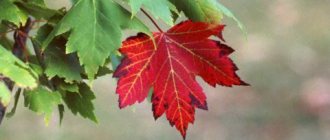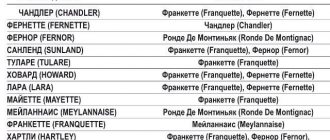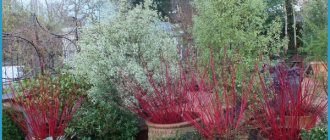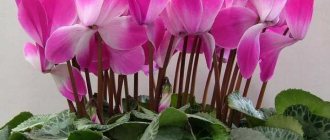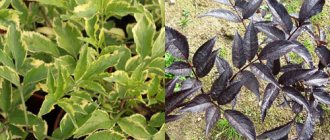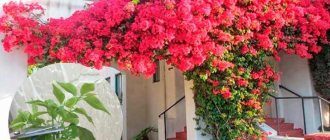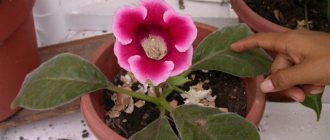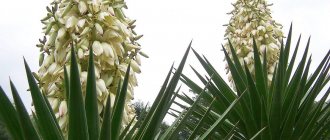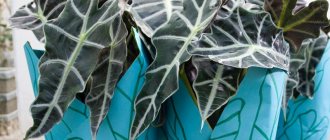Description of the plant
A perennial plant from the Crassulaceae family, in its natural environment it prefers the rocky terrain of the Mediterranean coast.
Most often found on rocky slopes and rock crevices. The root system is superficial, branched. The aichrizon flower is an evergreen succulent shrub up to 30 cm high. The branched, flexible, juicy, slightly curved stem is covered with delicate greenish skin, and only becomes woody after many years. Sometimes the indoor plant aichrizon is used as a bonsai formation.
At the top of the stem and branches, a “crown” of leaves is formed, giving the bush a dome-shaped, spherical appearance. Bright green, emerald, gray-green, fleshy, fleecy leaves are collected in rosettes in pairs or groups at the top of the branches. The shape of the leaves is varied - heart-shaped, triangular, round. Due to the similarity of the leaves to the heart, the plant is called the “tree of love.” Often there are representatives with various color inclusions in the leaf plate - white, red, yellow.
The flowering period is mid-late spring, and homemade aichrizon is able to delight with flowers for much longer, almost six months. Flowers are formed in groups on long branched peduncles (up to 20 cm). The shape of the flowers resembles a pointed daisy or a star; color – golden or various shades of yellow. A star-shaped flower, up to 2 cm in diameter, has 6-12 pointed petals.
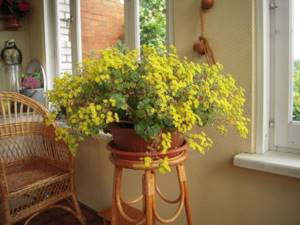
According to signs, aichrizon is able to bring happiness to its owner only if all conditions for maintaining a compact bush are met. With insufficient care, due to damage to the leaf blade or trunk, the plant secretes a clear liquid with a very unpleasant odor.
Since the plant is poisonous, if swallowed it can cause a reaction in the body that resembles poisoning. In the apartment, you should choose a place for the plant that is inaccessible to children and pets.
Signs and superstitions associated with the flower
There are many different signs and superstitions associated with the plant. Some believe that it can bloom only in a place where there is complete mutual understanding between spouses and harmony reigns in the family. Hence the name “tree of love” has taken root among the people.
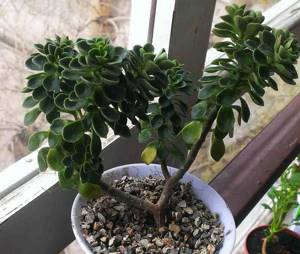
If the relationship in a couple deteriorates and becomes tense, then the aichrison begins to get sick. If there is disagreement in the family, it stops blooming, the leaves dry out, and the roots rot. Therefore, some advise monitoring the condition of the aichrison and, at the first symptoms, urgently establishing relationships with each other. Moreover, this applies to all spheres: emotional, spiritual and intimate. Only after all the “add-ons” will the tree of love become healthy and blooming again.
It is believed that the plant brings attraction, passion, and positive emotions to the couple. Therefore, it should be started by people who have not yet developed a relationship.
If the aichrizon begins to bloom, then it is believed that the only person with whom it is worth living together has appeared in the owner’s house. If the plant gradually withers after the appearance of a roommate, then esotericists advise paying attention to such a sign and not committing yourself to a relationship with this person.
Types and varieties
There are no more than 15 species, most of which are successfully grown as indoor plants. Aichrizon is an amazing compact shrub with unusual foliage and flowers. Indoor aichrizon will easily win the hearts of both beginners and experienced gardeners.
Aichrizon sedum-leaved
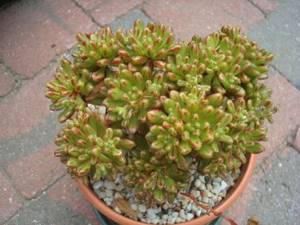
Aichrizon sedum-leaved
Another name for the species is aeonium. This is a compact shrub up to 40 cm high, with low stems, most of which are densely covered with foliage. A characteristic feature of the species is the appearance of the bush and the shape of the leaf. The leaf blade is smooth, oval, elongated, sticky, with a slightly pointed end, shaped like grapes. The leaves are densely planted at the top of the stem. The length of the sheet plate does not exceed 15 mm, width 6 mm. The color of the leaves is green-yellow with red splashes.
Racemose inflorescences, reaching approximately 10 cm in length, are formed at the ends of peduncles. Yellow flowers bloom in mid-late spring, flowering lasts no more than two months. A distinctive feature is that after flowering the plant sheds its leaves, thereby entering the winter dormancy phase.
Aichrizon point
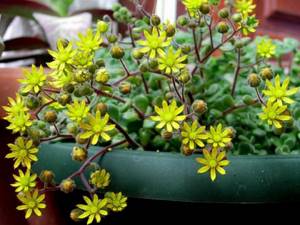
Aichrizon point
The branched reddish stem reaches a height of up to 30-40 cm. The leaves are diamond-shaped, covered with characteristic fluff, and have long petioles. Blooms densely, with yellow star-shaped flowers at the ends of long, sinuous peduncles.
Aichrizon prostrate or loose
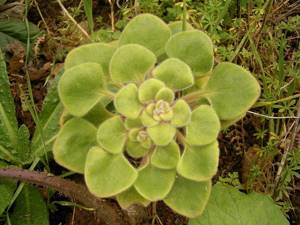
Aichrizon prostrate or loose
The indoor plant aichrizon friable grows no more than 40 cm in height. The highly branched trunk is quite flexible, so many representatives of the species are used in bonsai decoration. The leaves are muted green in color, fleshy, diamond-shaped, opposite, on short cuttings, sprouting densely in the upper part of the trunk and branches. The cuttings are so short that the leaf literally hugs the branch. Dense planting of leaves gives the plant a spherical shape.
Due to the external similarity of the outline of the leaf blade to the shape of a heart, the shrub is called the tree of love. Aichrizon prostrata blooms with yellowish star-shaped flowers collected in racemose inflorescences. Flowering lasts about six months, during which the plant sheds some of its leaves, and sometimes entire branches.
Aichrizon sinuous
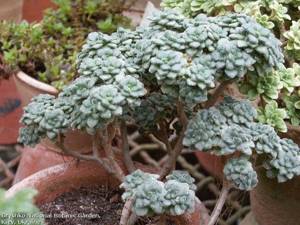
Aichrizon sinuous
The height of the miniature tree does not exceed 15-20 cm, the trunk is highly branched, with foliage collected at the ends of the trunk and branches into dense rosettes. The leaf blades are light green, dense, fleshy, diamond-shaped, with characteristic white hair on short cuttings. The flowers are beige in color, bloom in late spring, and the flowering period can be about six months.
Aichrizon home
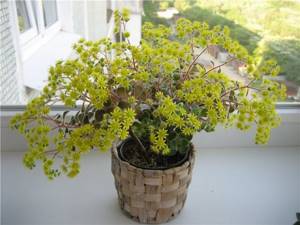
Aichrizon home
It is a hybrid obtained from Aichrizon sinuous and punctate. A small plant in the form of a shrub or tree, no more than 30 cm high, with a spherical crown. Green, fleecy, dense leaves, about 1 cm wide, are collected in dense rosettes at the ends of the stem and branches. During the flowering period, long (up to 20 cm) peduncles with paniculate inflorescences at the ends are formed. Long flowering lasts from spring to late autumn. The yellow flowers are small, with a pleasant smell, and delight with their appearance only if the plant is properly cared for.
Reproduction methods
Bouvardia flower: home care and methods of propagation
Aichrizon can be propagated in three main ways, descriptions of which are given below.
Cuttings
Cuttings are taken from a non-flowering plant. Parts of the flower that are taken during or after flowering will be almost impossible to root.
Important conditions for growing sprouts:
- frequency of watering - with light drying of the soil between waterings;
- rooting period - 14 days;
- temperature: from +20 to +25 degrees;
- lighting - diffused sunlight;
- rooting medium - soil mixture, the composition of which is the same as for adult plants.
Leaves
Propagation by leaves of the aichrizon flower is carried out in the same way as by cuttings. Young and strong leaves are cut from the top of the plant. So that the leaves can take root, wet sand or a regular substrate for succulents is used as a soil mixture.

Flower propagation
Seeds
Please note that seed germination lasts for 5 years. Unused seeds are best stored in the refrigerator.
Conditions for a plant to reproduce by seeds:
- germination period: 5-10 days;
- air humidity: 100%;
- soil: standard, as for an adult plant;
- the substrate must be constantly moist throughout the germination period;
- ambient temperature: from +18 to +20 degrees;
- lighting: diffused sunlight or even partial shade.
Plant care
Aichrizon at home is not particularly difficult to care for. By following simple maintenance rules, you can get an almost evergreen and long-flowering tree. The indoor plant aichrizon compares favorably with the rest of the home flower garden in its shape, size, appearance, and abundant flowering. Even novice flower growers can easily figure out how to care for the tree of happiness so that it always brings only pleasant emotions and is a symbol of goodness and love.
Air humidity
Aichrizon is absolutely indifferent to air humidity; additional spraying of leaves is not required. However, a warm shower for the plant during the hot season will not hurt at all. Any water procedures during the rest period are strictly contraindicated.
Top dressing
For good growth and abundant flowering, the plant must be fed with complex fertilizers with a low nitrogen content. The fertilization period is in spring - summer. The frequency of feeding is no more than 2 times a month.
Watering
The plant does not tolerate excess moisture in the soil, as a result of which in the spring and summer the bush is periodically watered little by little, approximately once every 3 days. Between waterings, the soil in the flower pot should dry out by half.
How do you know that a plant needs water? It’s very simple - if the leaves and trunk are elastic and strong, then the plant has enough water and no additional watering is required. If the leaves and stems become soft and limp, the aichrizon needs watering. Rare but abundant watering can lead to stagnation of water, as a result of which the root system can begin to rot.
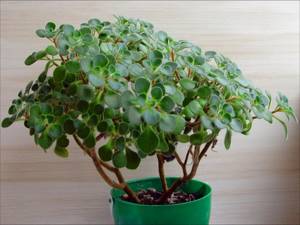
Temperature
During the flowering period, the ambient temperature should be between +23...+25°C. In winter, during the dormant period, the pot with the plant must be moved to a room with a temperature of +10°C. If the temperature regime is violated during the wintering period, when the air temperature exceeds the recommended value, the plant sheds its leaves and the stem stretches.
Central heating radiators have a detrimental effect on the well-being of the tree. To reduce the degree of drying out of the soil, during the heating season, the flower pot is placed on a high wooden or foam block.
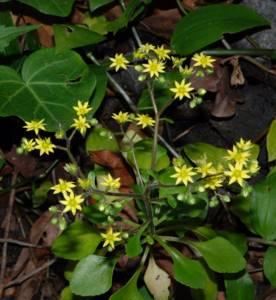
Lighting
The light-loving plant prefers bright, diffused light, without direct sunlight. The best location for a flower pot will be window sills on the east and west sides; on the south side you will have to take care of creating a little shading. For good growth, the optimal exposure to light should be 12-14 hours. In this case, you should periodically turn the pot so that the tree develops, grows and receives sunlight evenly.
The soil
The plant is undemanding to the composition of the soil; for good growth it is recommended to select well-fertilized soil with a high content of sand and turf. Specialized flower shops sell special soils for succulent plants; a soil mixture for cacti is also good. Some gardeners have successfully grown aichrizon in vases with hydrogel.
Trimming
To create a neat crown of the required shape, the plant is pruned. Weak, limp branches and leaves are removed. For lush growth of leaves, pinch the tops of young shoots. After a dormant period, elongated shoots are cut to the required length.
Rest period
After flowering there comes a time of rest, which occurs in the autumn-winter period. The beginning of hibernation is characterized by complete or partial loss of foliage. At this time, the pot with the plant is removed to a room with a temperature of about +10°C. A glass balcony or outdoor greenhouse is perfect for this. Watering is reduced to three times a month.
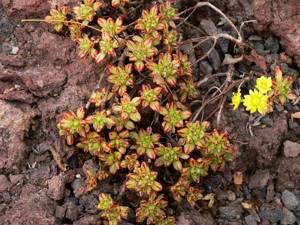
Possible difficulties
If not properly cared for at home, aichrizon may wither, shed leaves, or even die. In order for the plant to feel good, it is necessary to choose a watering regime in which the soil is not too moist, but not too dry. If this regime is not followed, the plant will quickly lose its bright, healthy, unusual appearance.
The main difficulty in growing is the loss of foliage. A review of the irrigation regime and the introduction of additional fertilizer will help solve it. Many people do not remove excess foliage and overgrown branches. With all this splendor of the “green dome”, the trunk can suffer greatly from this, since it can simply break under the weight of twigs and leaves.
Pests and diseases
The aichrizon flower can be affected by rot. If the roots begin to rot, then remove the flower from the pot, trim them to healthy places, place them in a solution of potassium permanganate, then sprinkle with crushed coal. Then replant it in a new pot with fresh soil.
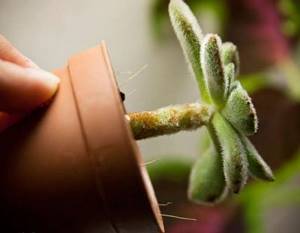
Aichrizon can be attacked by spider mites or mealybugs.
If this happens, first wash the leaves with soapy water.
Next, spray with Actellik and Fitoverm.
If the leaves wrinkle and lose turgor, this means that they do not have enough moisture. If the stems are elongated and faded, then they do not have enough lighting.
The leaves of the flower rapidly fall off: due to direct rays of the sun, excess moisture, and air temperatures in winter that are too high for the flower.
If there is excess moisture, the flower rots. If brownish or yellowish spots appear on the leaves, this means that the plant has been burned by the sun's rays.
plant does not bloom if it does not have enough light .
Features of flowering
The period when aichrizon begins to flower is in the middle - end of spring, and only at the age of three is the tree able to bloom. Many gardeners choose either a densely leafed green tree or a flowering aichrizon, since, in most cases, one excludes the other. When the plant blooms profusely, the plant spends a lot of energy; to maintain its lush color, the bush sheds its leaves, and some branches may dry out.
Aichrizon can bloom for almost six months, as a result of which many gardeners do not allow the development of flower stalks in order to preserve the appearance of the plant.
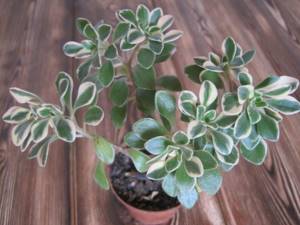
Plant characteristics
Aichrizon was nicknamed the tree of love, because the shape of its leaves resembles a heart. It belongs to the succulent plant family called Crassulaceae. These representatives of the flora grow in Portugal, the Canary and Azores Islands, as well as in Morocco and Madeira.
This is a perennial, semi-shrub plant. Translated from Greek, part of the name “ai” is translated as “always”, and the second part “chryson” means “golden”.
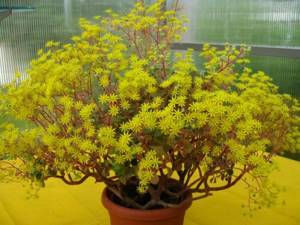
Planting and propagation
The indoor plant aichrizon is propagated by seed and vegetative methods. Even a novice gardener can cope with any of the aichrizon propagation options; they are not particularly difficult.
Landing
For a young aichrison, choose a small and shallow flower pot. It must have several holes at the bottom to remove excess moisture. Place the plant in the center of the container for uniform growth of the root system.
Aichrizon is a non-conflict plant and gets along well with other members of its family, which is why many gardeners create “mini flower beds” with an amazing combination of succulent compositions, planting different types of aichrizon next to each other.
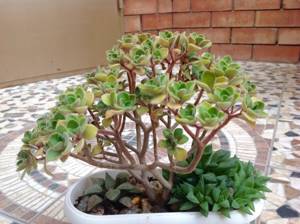
Transfer
It is necessary to replant aichrizon when the roots of the plant become crowded in a flower pot. The new pot is chosen to be wider, but not lower than the old one, with a sufficient number of holes at the bottom of the container. Before transplanting, a thick drainage layer of expanded clay or pebbles is poured onto the bottom of the pot. The plant should be replanted only by transshipment, preserving the original clod of earth. After manipulation, the plant is left alone for at least a week, completely stopping watering during this time.
Reproduction of aichrizon at home
For the seed propagation method at home, prepare a shallow container with loose soil, sow the seeds and lightly sprinkle with soil. Using a sprinkler, moisten the soil and cover the container with glass or other transparent material, creating a greenhouse effect. It is advisable to leave a small hole or remove the lid every day for a couple of hours for ventilation, but the soil should not dry out. The optimal temperature for maintaining a greenhouse is + 15… + 20°C. After 14 days, the first shoots will appear. Transplantation into another, more fertilized soil is carried out after the appearance of the third leaf.
Young shoots are transplanted to a new place of “residence” at a distance of at least 5 cm from each other. When the seedlings become stronger, they are transplanted one by one into separate small flower pots and cared for as an adult plant. Throughout the entire time, from sowing to transplanting into pots, the plant needs good lighting, and therefore it is preferable to plant seeds in the spring.
The vegetative method involves propagation by cuttings. To do this, cut the branches to about 7-10 cm and leave them for a day in a shaded, dry room until the cuttings are dry. Cuttings are stuck into specialized loose fertilized soil or a specialized earthen mixture for succulents. Many gardeners leave cuttings in a glass of water or wet sand, but this increases the chance of rot. After 2-4 weeks, roots appear on the shoot, after which it is transplanted “to a permanent place of residence.”
One of the characteristic features of a plant is its ability to reproduce using any part of it. Even a leaf stuck into the ground can produce roots in a short period of time, as a result of which fallen leaves should be removed as often as possible, otherwise the young shoots will quickly fill the flower pot.
2.Aichrizon - care at home
2.1.Reproduction
The plant remains decorative only for 1 - 2 years, but produces abundant self-seeding after flowering.
Seeds are sown in moist and nutritious soil under a glass or transparent plastic cover in the spring . The crops are ventilated daily and sprayed if necessary.
Propagation by cuttings is quite easy - rooting occurs within 2 - 4 weeks .
Small cuttings take root in spring or summer, after first drying the cutting area for several hours.
Take shoots 8 - 10 cm in length , tear off the lower leaves and plant them in slightly moistened soil made of equal parts of peat, moss and coarse sand or perlite.
Provide bright light and adequate watering.
↑ Up,
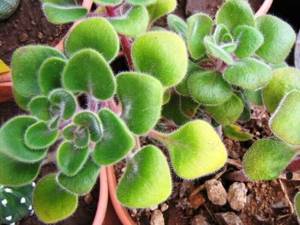
2.2.How to care and trim
Caring for this succulent is not difficult at all.
Timely removal of inflorescences will help prevent leaf drop and increase the lifespan of the plant.
Regular pinching of young shoots causes the plant to branch profusely.
Avoid placing the plant near heating appliances during the winter months.
2.3.When it blooms
In spring - summer , the flowering period can last up to six months.
How to make aichrizon bloom? Flowering can be caused by prolonged drying of the soil .
A flowering succulent loses a lot of strength in this process, so the flower stalks are often removed.
↑ Up,
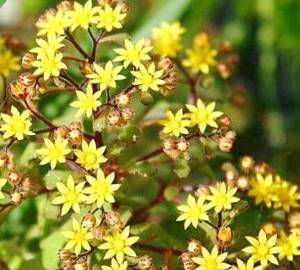
2.4.Soil
The planting substrate should be sandy, well-drained with mild acidity or neutral (6.1 - 6.5 pH).
The drainage material should make up 30 - 50 percent of the total volume .
nutrient-poor soils well .
↑ Up,
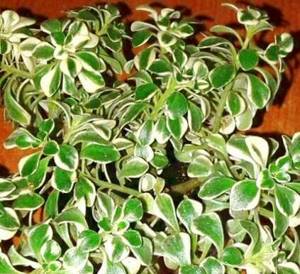
2.5.Transplantation of aichrizone
Since the bush has a small root system, it does not need large pots ; it is enough to transplant it into a pot with a diameter of 10 - 13 cm .
If necessary, move second year plants to one size larger pots in the spring.
The size of the pot for it directly affects the size of the plant itself - in cramped conditions the bush often remains compact.
Try to use transshipment - the plant does not like damage to the root system.
↑ Up,
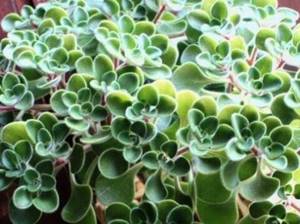
2.6. Diseases and pests
Leaves often fall off after flowering . If too many leaves fall off, move the plant to a cooler location in partial shade.
Rotting occurs when watering too much and the constant presence of moisture in the pan.
Aichrizon does not bloom in the absence of a dormant period in cool weather or insufficient light.
2.7. Watering
During the period of active growth water generously , completely saturating the soil ball, but allowing the top half of the potting mixture to dry out between waterings. When overwatered, plants become stretched.
During the dormant period , if there is one at all, water rarely , just so that the soil does not dry out completely.
It is advisable to use bottom watering so that moisture does not linger in the pubescence of the plant.
↑ Up,
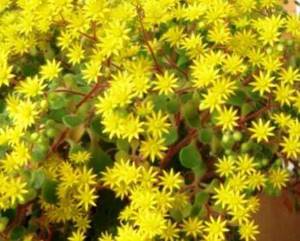
2.8.How to spray
These plants will thrive in humid environments , but are well suited to dry conditions. Excessive spraying, especially in cloudy weather, causes plants to rot.
2.9.Fertilizers
If the succulent is given a winter dormant period, apply standard liquid fertilizer every two weeks only during the period of active growth. If kept warm all year round, you can feed it year-round with fertilizer at half the concentration.
2.10.Temperature
The plant tolerates a wide range of temperatures . Under normal room conditions it grows continuously. If you keep the plant indoors where the temperature drops below 13 ° C and in the shade, it will go into a dormant period and stop growing, but will bloom profusely next season.
↑ Up,
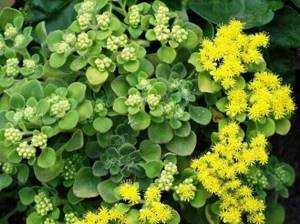
2.11.Containment conditions - light
The plant prefers light partial shade in the daytime , however, in poorly lit places, aichrizon does not bloom and becomes lanky and elongated. Provide the plant with direct sunlight in the morning and evening for 3 to 4 hours daily .
↑ Up,
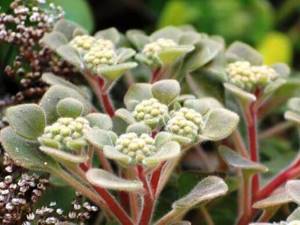
2.12.Purpose
Quite a rare species in culture, perhaps due to its potentially short life. A fast growing plant, but, as a rule, the lower part of the stem becomes exposed . The plant can be formed into an attractive bonsai .
2.13.Note
The lifespan of this species is 1 - 2 years ; the succulent can die after flowering - but not always. The second name, “ Tree of Love ,” may have been given to the plant because of the shape of the heart-shaped leaves. Among the signs associated with these plants, there is a belief that couples who successfully grow the plant for a long time become happier.
Bloom
This action begins when Aichrizon reaches the age of two or three years, usually in the spring, and can last up to six months or even longer. During this period, many leaves may fall off, and the peduncle that has outlived its usefulness eventually also dies. If Aichrizon, which has grown to such years, does not bloom, you can keep it in more strict conditions during the next period of winter dormancy, transplanting it into a smaller container for a relatively cold and light winter, observing a rare watering regime.
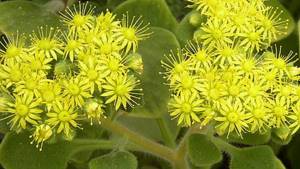
Reproduction
Rooting into the ground
Aichrizon reproduces by aerial roots, so the easiest way to get a new plant is to cut a cutting from an old one, choosing a branch on which characteristic growths have begun to form. To root a succulent this way, simply stick the cutting into the soil and make sure it doesn’t dry out. After new shoots appear on the branch, Aichrizon is planted in a new permanent container.
Cuttings
It is a little more difficult to root cuttings in water, because there is a high probability that they will rot due to excess moisture. Cuttings of Aichrizon are more effective than propagation by seeds, since the latter very quickly lose their germination capacity, and you can’t buy them in every store.
Seating
In some cases, you can also propagate a flower by carefully dividing the earthen ball when replanting.
